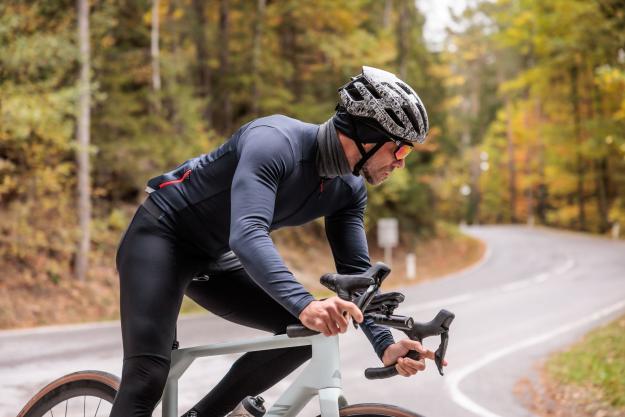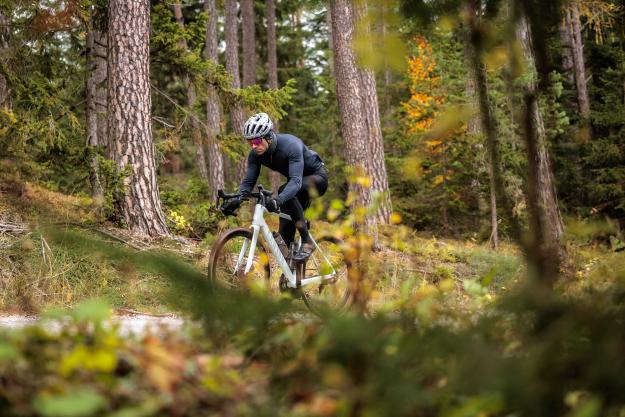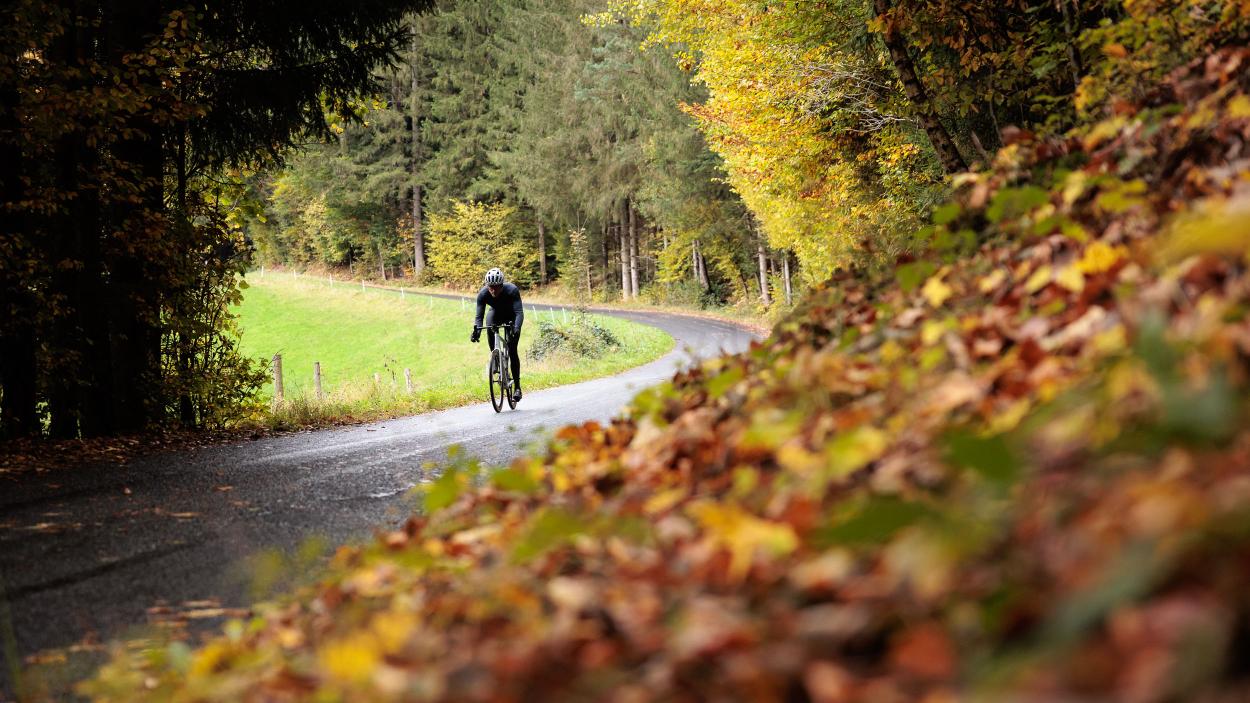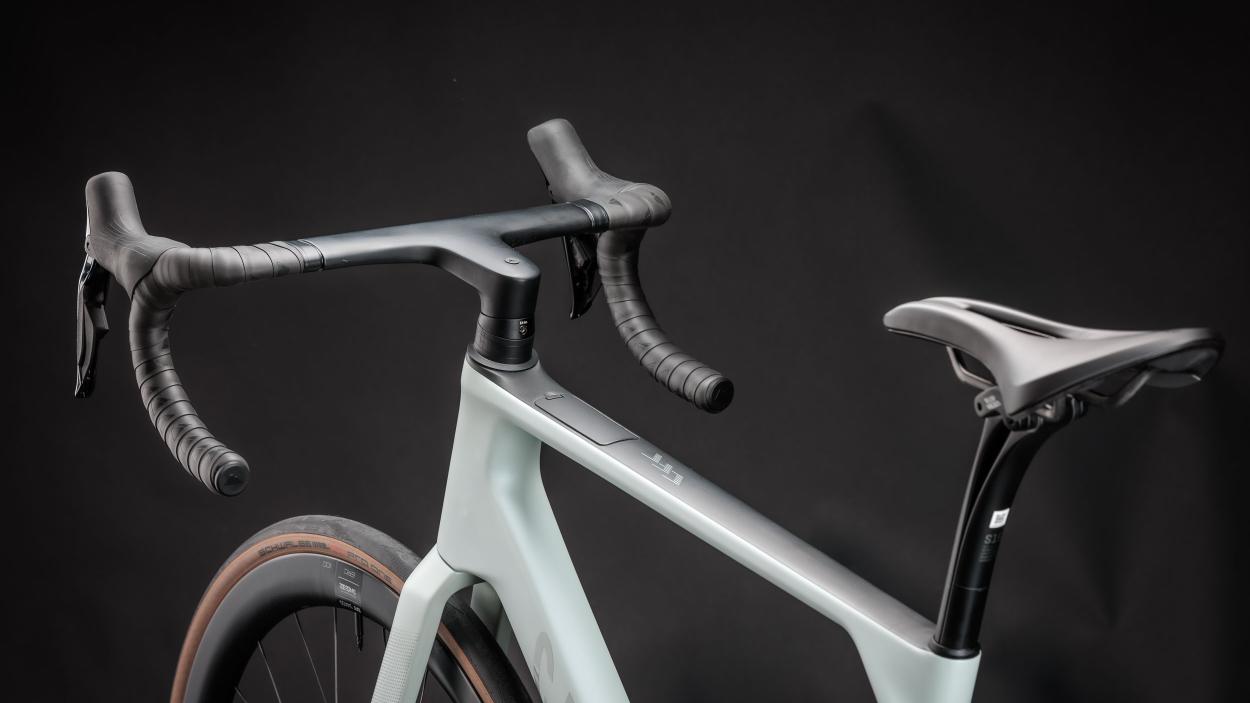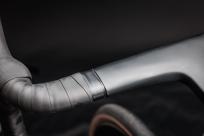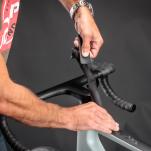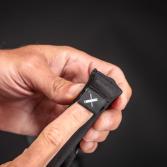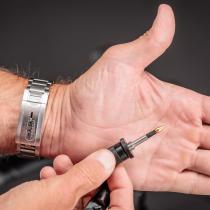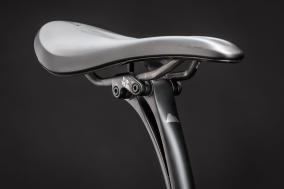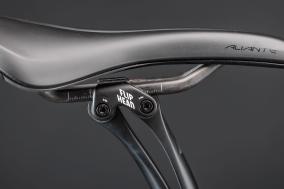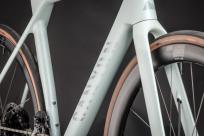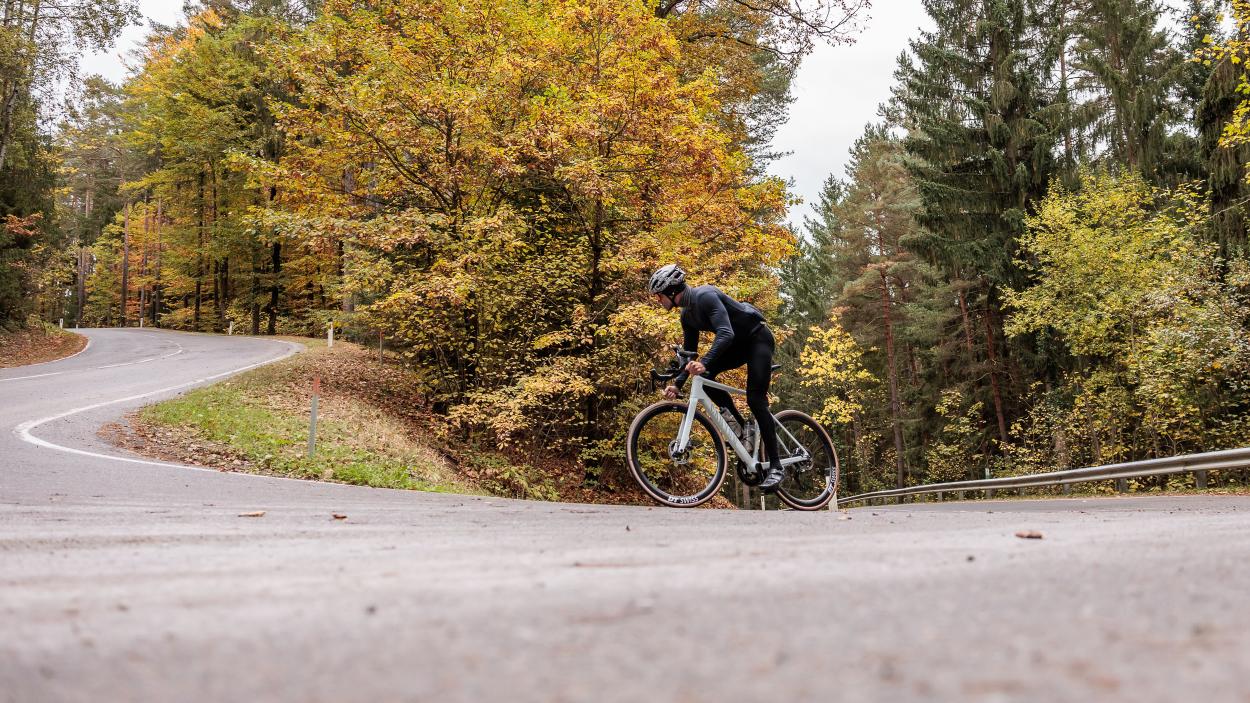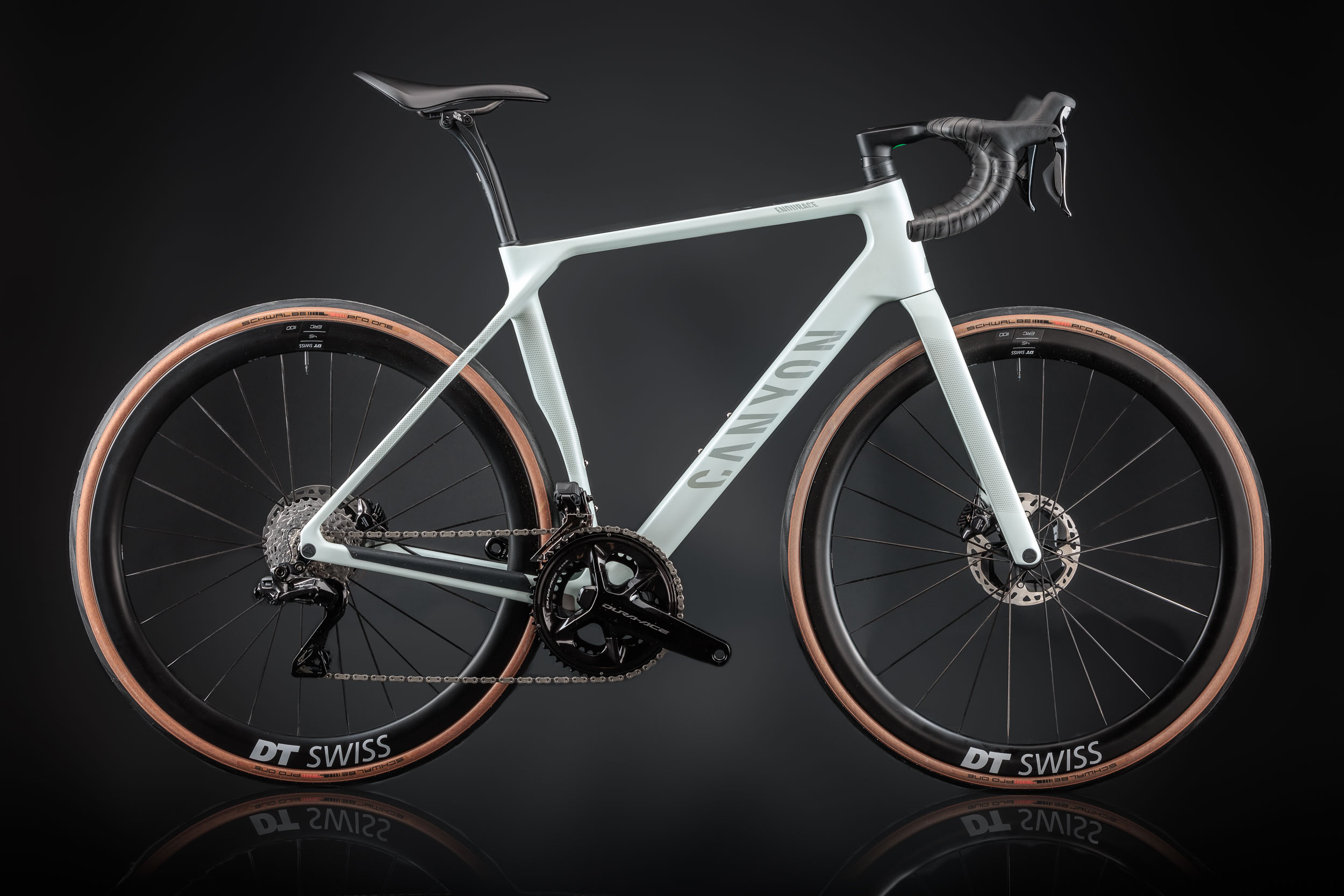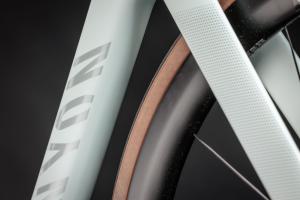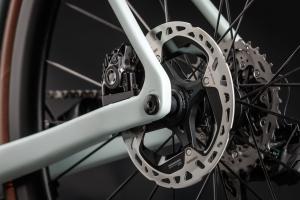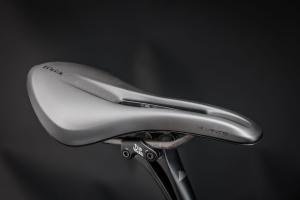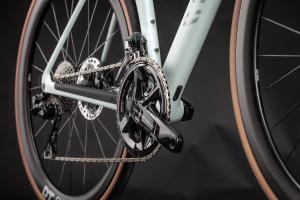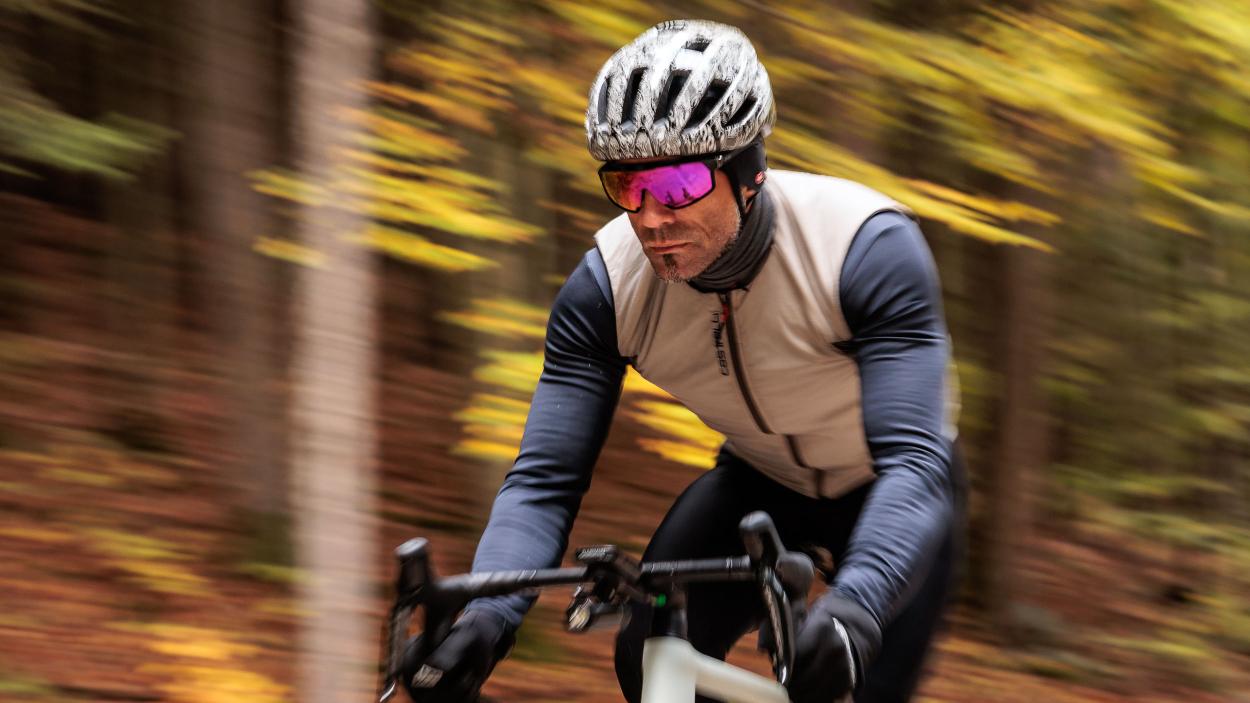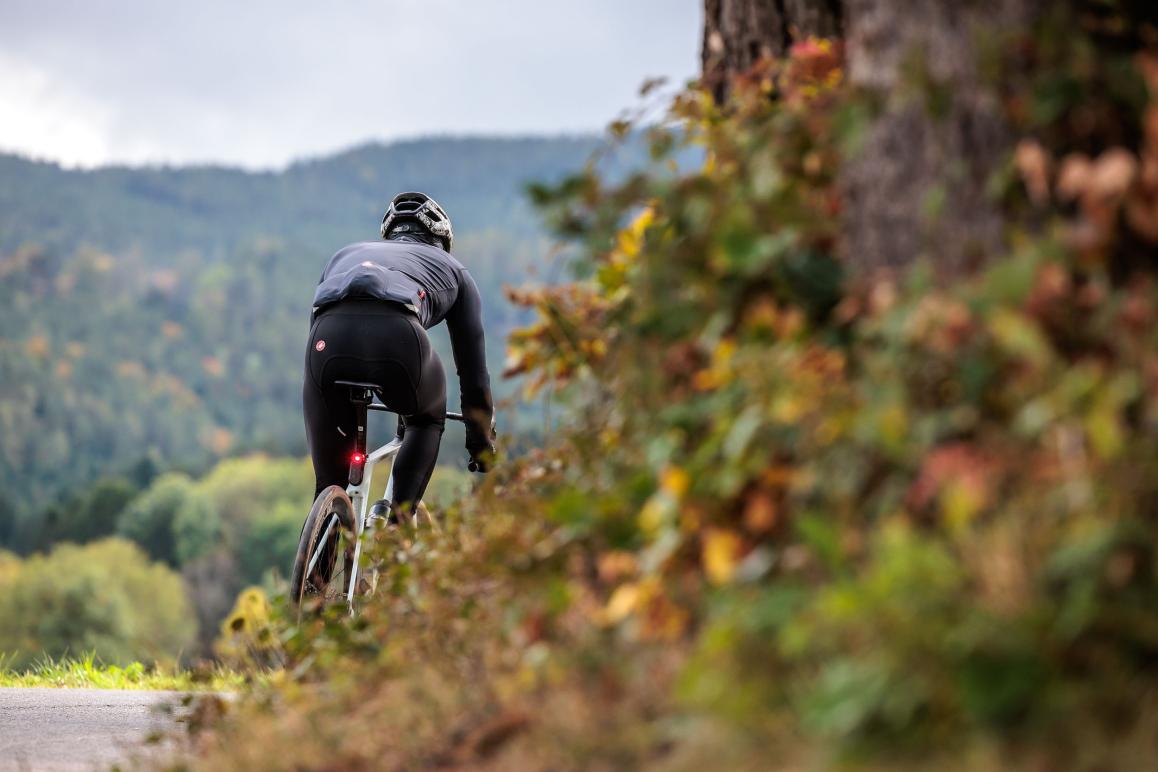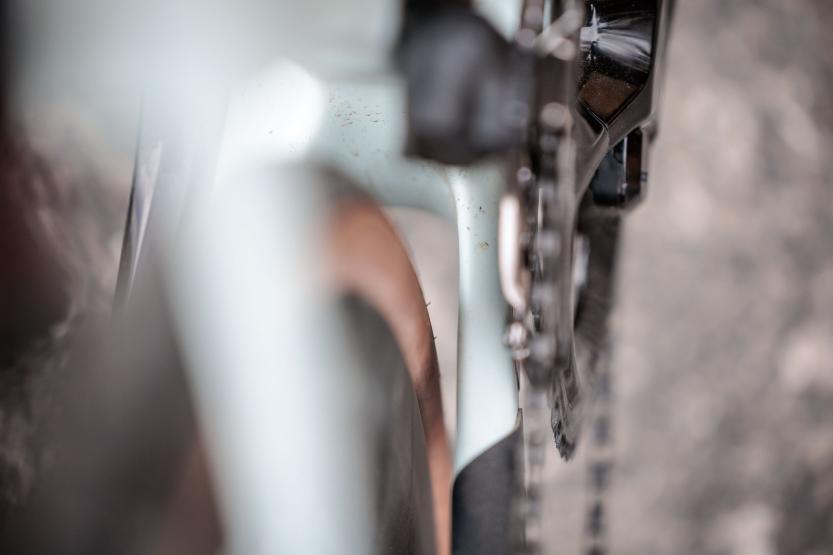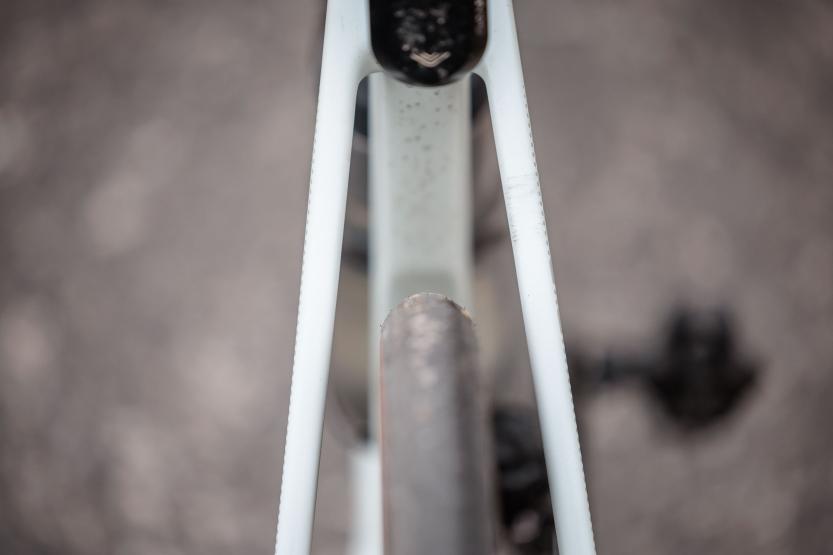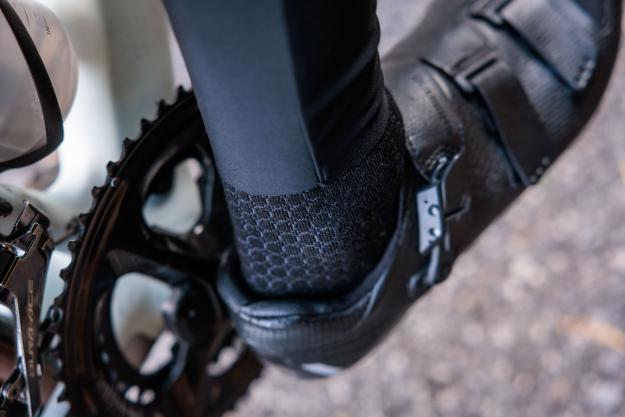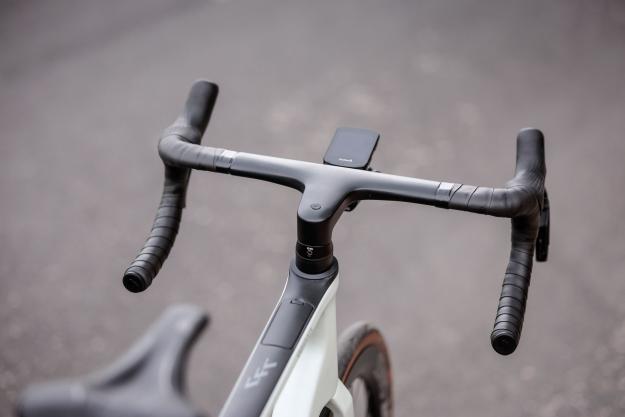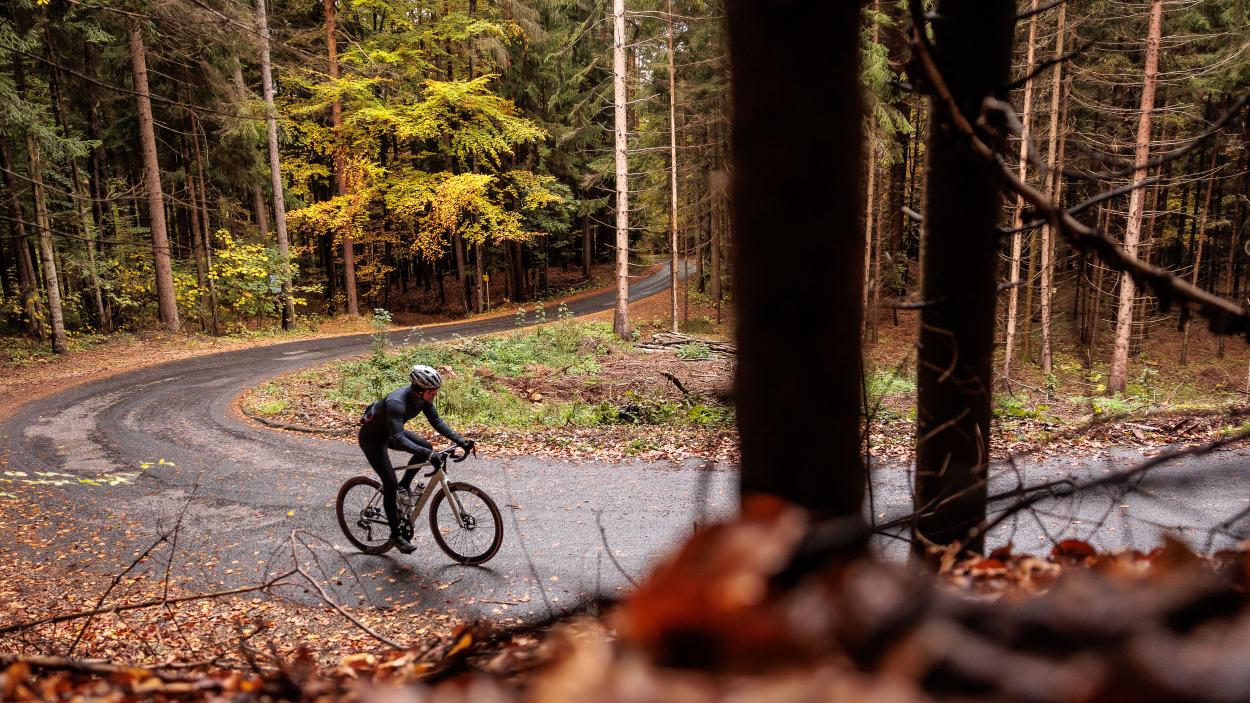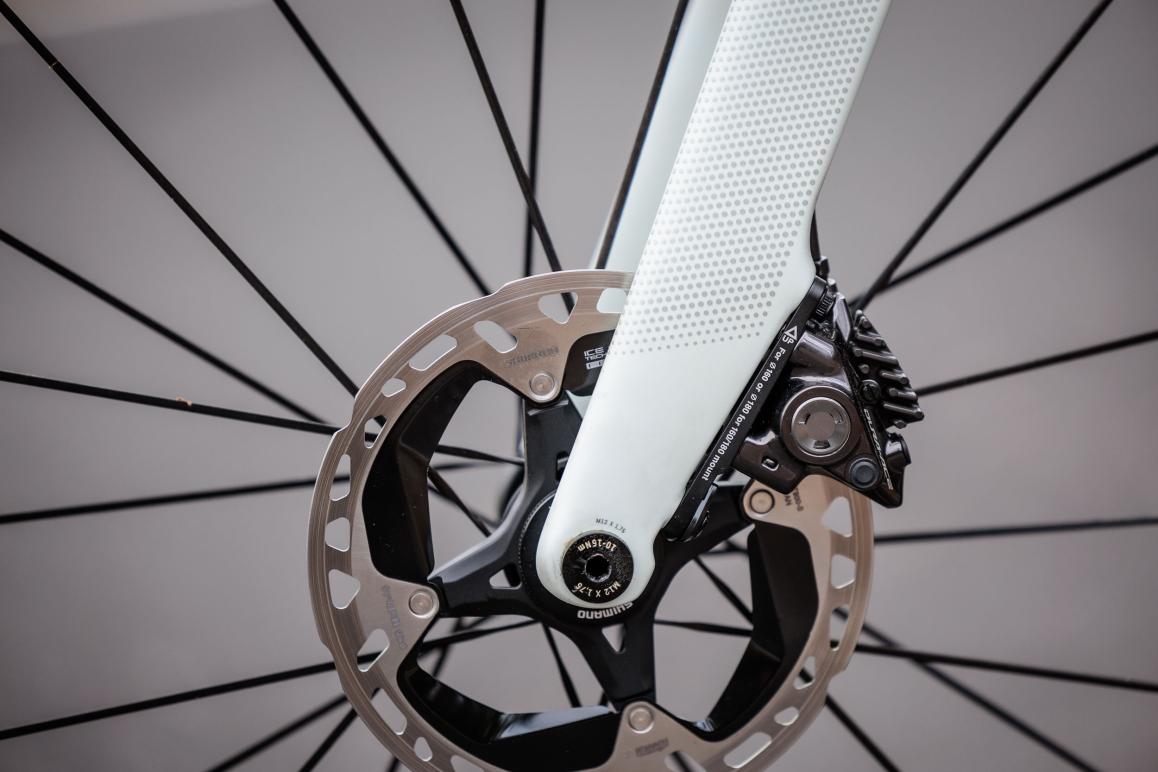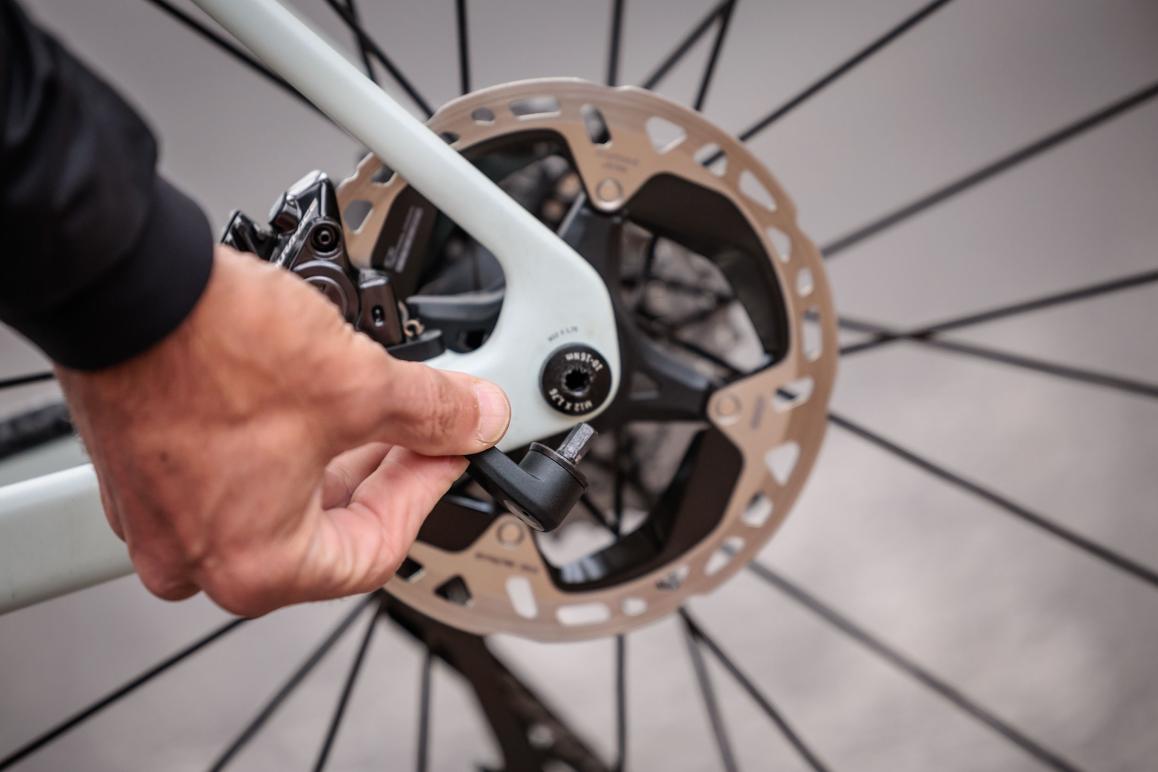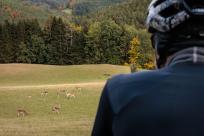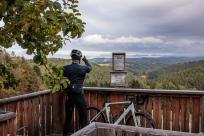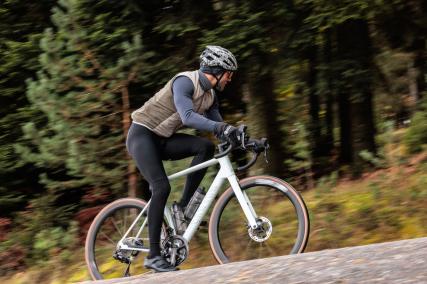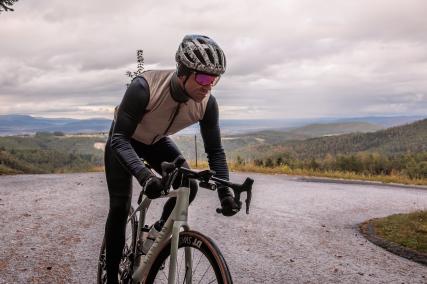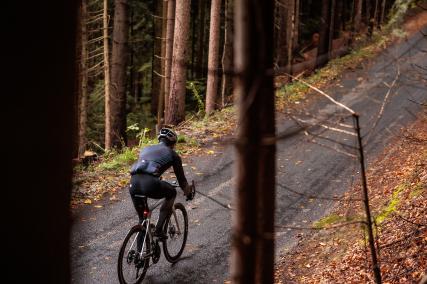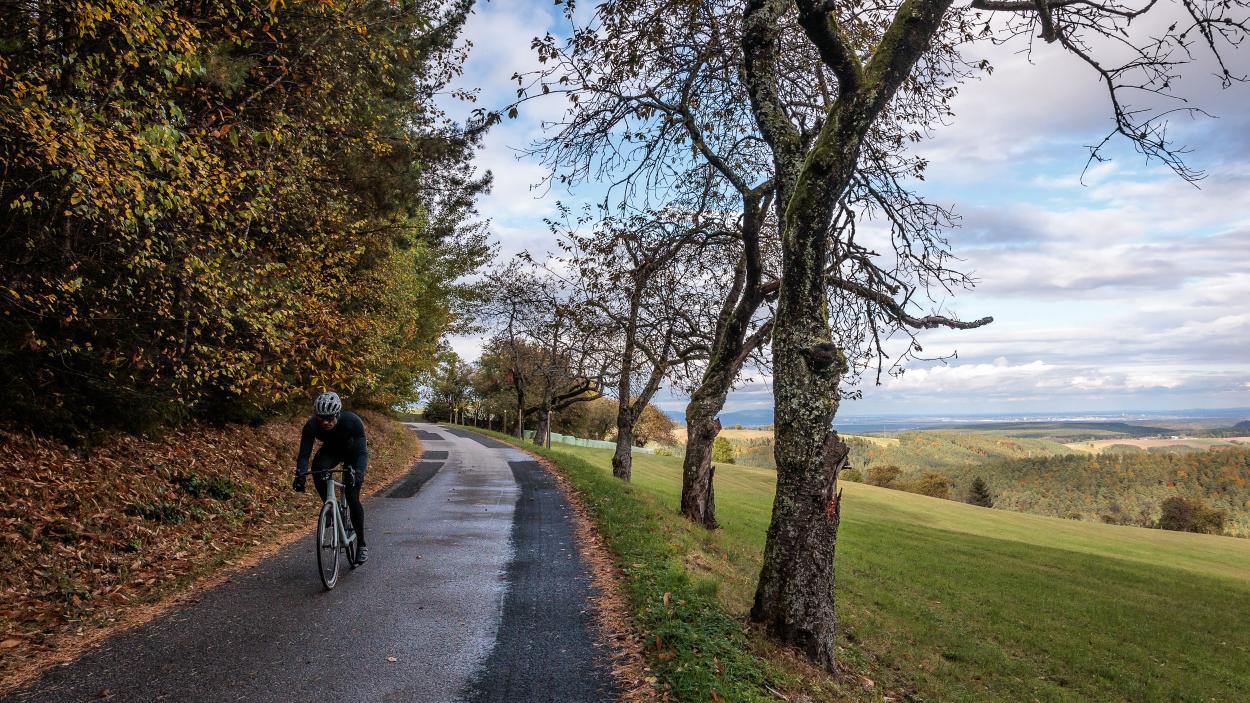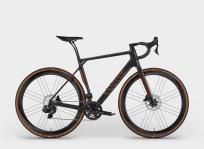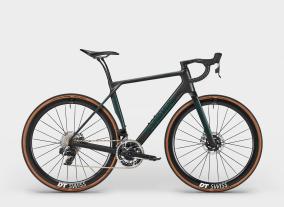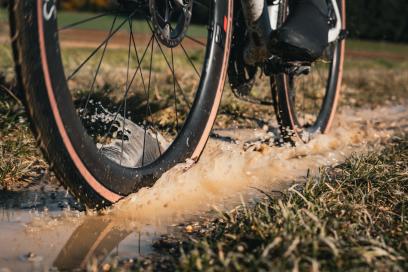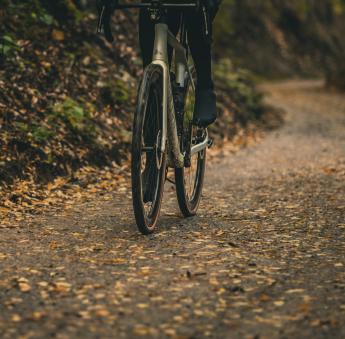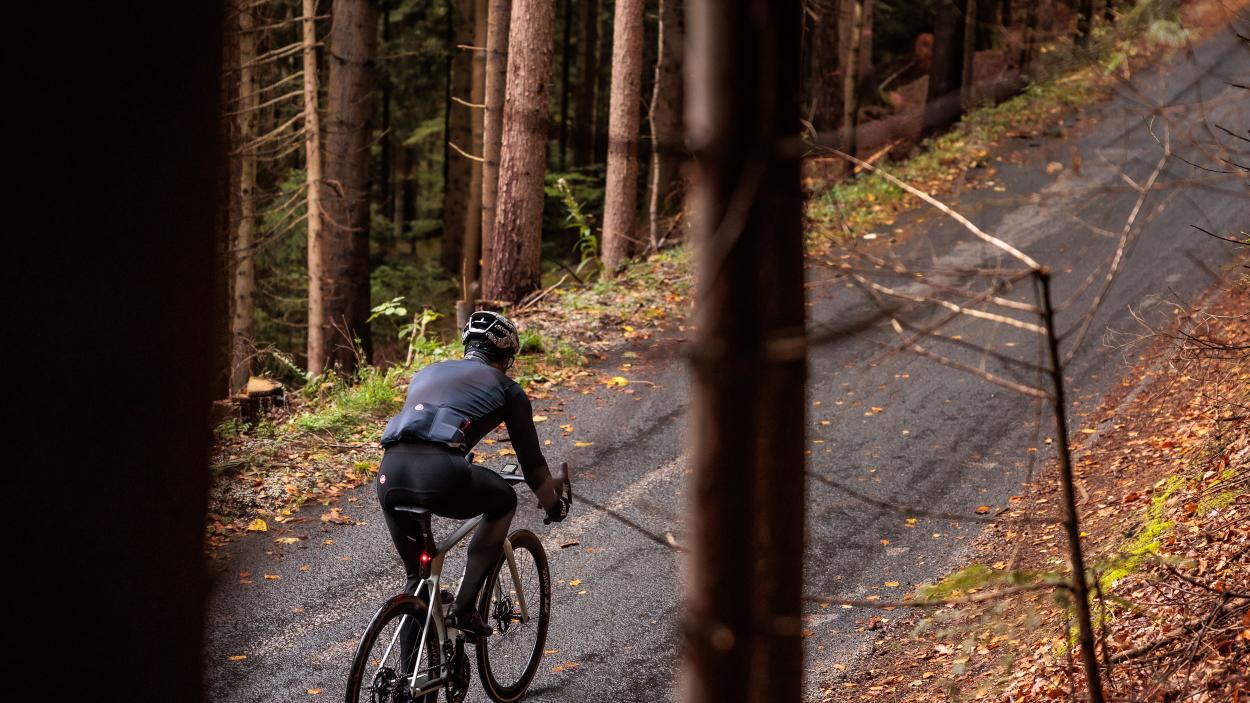
Canyon Endurace CFR Di2 Review
22.01.24 06:41 1032024-01-22T06:41:00+01:00Text: NoPain (translated by AI)Photos: Erwin Haiden, @Tailor.ShotsIs the Canyon Endurace CFR the fastest endurance race bike on the market? Showroom and long-term review kickoff of the sporty comfort racer.22.01.24 06:41 1262024-01-22T06:41:00+01:00Canyon Endurace CFR Di2 Review
22.01.24 06:41 1262024-01-22T06:41:00+01:00 NoPain (translated by AI) Erwin Haiden, @Tailor.ShotsIs the Canyon Endurace CFR the fastest endurance race bike on the market? Showroom and long-term review kickoff of the sporty comfort racer.22.01.24 06:41 1262024-01-22T06:41:00+01:00Canyon's road bike portfolio impresses with its impressive variety of high-performance race bikes and a clear model distinction. For triathletes and time trialists, the Speedmax is the first choice, while professionals, amateurs, and ambitious recreational athletes can choose between the Aeroad for maximum aerodynamics and the Ultimate for exceptional all-around capabilities and climbing properties. Furthermore, the recently revised Endurace is celebrated by the Koblenz-based company as a fast long-distance road bike, but we are convinced that it in the optimal frame size (!) even represents the ideal choice for the majority of all road cyclists on this planet. It combines performance and comfort in an outstanding way and, despite its somewhat more moderate geometry, increased tire clearance, and improved frame comfort, should not be considered a cozy touring road bike. Instead, it impresses with its impressive speed and almost all the performance features that also distinguish the other racers from Canyon.
Canyon Racing Bikes "Onroad Use
| Models | Speedmax | Aeroad | Ultimate | Endurace |
| Speed & Performance | Speed & Comfort | |||
| Application area | TT (& Tri) | Road Aero | Road Allround | Road Long Distance |
| On-/Offroad % | 100% | 80% / 20% | ||
| Target group | Professionals, amateurs, true racers, performance-oriented recreational athletes, posers, and connoisseurs. | Gran Fondo racers, long-distance pilots, and comfort lovers with sporting ambitions. | ||
In the past two years, we had the opportunity to test the Ultimate CF SLX 8 with Ultegra Di2. We particularly appreciated its riding characteristics, the sophisticated integration solutions, and its outstanding everyday usability. Now, we are opening a new chapter with the long-term review of the current Endurace CFR Di2. Equipped with Shimano's latest 12-speed premium groupset including Spider Powermeter, DT Swiss ERC 1100 wheels with Schwalbe Pro One TLE tires (30 mm front and 32 mm rear), and a lightweight total weight of only 7.3 kg, the endurance racer has the best conditions for setting new personal records on NoPain's home course.
Frame size and tires determine the level of performance.
Agility vs. Smooth Running, Aerodynamics vs. Comfort, Stiffness vs. Compliance, etc.Go long or go home
Since its introduction in 2014, Canyon's Endurace combines the highest long-distance comfort with classic racing bike performance, primarily focusing on the specially developed 'Sport Geometry', which ensures a relaxed seating position with optimal relief for the back and shoulders despite dynamic handling. This is supported by a comfort-optimized design of the frame, fork, and components like the legendary VCLS leaf spring seat post.
With the latest generation, they aim to improve the Endurace in all nuances - such as adaptability, integration, aerodynamics, and comfort or the flexibility in choosing routes - while simultaneously preserving the well-known strengths and characteristics of the successful model series.
Adaptability
How comfortable one feels on their road bike primarily depends on the optimal fit and seating position. In this context, a comparison of the "Sport Geometry Concept" of the Endurace with the Race Geometry of the Ultimate is worthwhile: In frame size Medium, the Endurace has 27 mm more stack and 15 mm less reach compared to the Ultimate, thus having a stack-to-reach value of 1.56 - compared to the slightly more aggressive value of 1.43 of the Ultimate. The result is a less bent sitting position, which noticeably relieves the back, core muscles, and shoulders.
Hats off to Canyon's geometry table. In addition to the usual lengths, angles, and stack/reach values, there's also a crystal-clear size recommendation along with the achievable seat heights. Moreover, detailed dimensions of the components facilitate the choice of frame size. Those who lose track despite or precisely because of the enormous variety of data, call the Canyon hotline.
Geometry
| 3XS | 2XS | XS | S | M | L | XL | 2XL | |
| Body height (cm) | < 159 | 159 -165 | 165 -171 | 171 -178 | 178 -185 | 185 -192 | 192 -198 | >198 |
| Seat height (mm) | 593 -693 | 623 -723 | 653 -753 | 683 -783 | 713 -813 | 743 -843 | 773 -873 | 803 -903 |
| Seat tube length (mm) | 402 | 432 | 462 | 492 | 522 | 552 | 582 | 612 |
| Top tube length (mm) | 509 | 519 | 540 | 551 | 561 | 576 | 602 | 617 |
| Head tube length (mm) | 123 | 138 | 129 | 146 | 165 | 186 | 212 | 232 |
| Steering angle (°) | 70.3 | 71.5 | 70.8 | 71.8 | 72.75 | 73.0 | 73.3 | 73.3 |
| Seat tube angle (°) | 73.5 | 73.5 | 73.5 | 73.5 | 73.5 | 73.5 | 73.5 | 73.5 |
| Chainstay length (mm) | 405 | 405 | 415 | 415 | 415 | 415 | 415 | 415 |
| Wheelbase (mm) | 959 | 958 | 991 | 993 | 993 | 1,006 | 1,029 | 1,044 |
| Stack (mm) | 510 | 529 | 548 | 568 | 590 | 611 | 637 | 656 |
| Reach (mm) | 350 | 354 | 370 | 375 | 378 | 387 | 405 | 415 |
| STR | 1.46 | 1.49 | 1.48 | 1.51 | 1.56 | 1.58 | 1.57 | 1.58 |
| Spacer (mm) | 15 | 15 | 15 | 15 | 15 | 15 | 15 | 15 |
| Stem length (mm) | 70 | 80 | 80 | 90 | 100 | 110 | 110 | 120 |
| Handlebar width (mm) | 390 | 390 | 390 | 390 | 410 | 410 | 410 | 410 |
| Crank length (mm) | 170.0 | 170.0 | 170.0 | 172.5 | 172.5 | 172.5 | 175.0 | 175.0 |
| Chainring size | 52/36 | 52/36 | 52/36 | 52/36 | 52/36 | 52/36 | 52/36 | 52/36 |
| Brake discs f/r (mm) | 140 | 140 | 160 | 160 | 160 | 160 | 160 | 160 |
| Saddle post length (mm) | 350 | 350 | 350 | 350 | 350 | 350 | 350 | 350 |
| Max. insertion of the saddle post (mm) | 207 | 207 | 207 | 207 | 207 | 207 | 207 | 207 |
| Min. insertion of the saddle post (mm) | 107 | 107 | 107 | 107 | 107 | 107 | 107 | 107 |
| Saddle post diameter (mm) | 27.2 | 27.2 | 27.2 | 27.2 | 27.2 | 27.2 | 27.2 | 27.2 |
| Wheel size | 650b* | 650b* | 700c | 700c | 700c | 700c | 700c | 700c |
Since Canyon places great importance on covering a wide range of body sizes, the Endurace CFR and CF SLX platforms are available in 8 frame sizes from 3XS to 2XL, to accommodate riders with a body height of 152 cm to over 200 cm.
* Note: To ensure consistent handling regardless of frame size, proportionally smaller 650b wheels are used for the 2XS and 3XS frame sizes.
Integration
The new Endurace models are equipped for the first time with Canyon's innovative CP0018 Aerocockpit, which we already know from the Ultimate. Originally developed for the Aeroad, it solves many problems encountered with other fully integrated stem/handlebar combinations thanks to its simplified structure: easy assembly, fine adjustment, and compact packing size guaranteed.
With three width positions tailored to the respective frame size and different combinations of spacers, there are a total of 12 different configurations with a 15 mm vertical adjustment range (in increments of 5 mm each) and a 40 mm lateral adjustment range (in increments of 20 mm each) for an individual handlebar geometry: Low and narrow for even better aerodynamics or high and wide for a more upright sitting position and more control. Two screws connect the included GPS mount for Garmin or Wahoo to the handlebar. An additional advantage for frequent flyers is the detachable handlebar wings for a compact packing size.
Simple assembly, fine adjustment, and compact packing size guaranteed.
Canyon CP0018 AerocockpitLoad Top Tube Storage System
A real highlight is Canyon's "Load Top Tube Storage System", an integrated storage solution in the top tube. Housed within is a padded, perfectly sized neoprene bag containing a 3-in-1 mini tool with ratchet, 8 bits, Dynaplug, and CO2 pump, as well as a 16 g CO2 cartridge and a pair of Canyon Slim tire levers. This ensures that all the most important tools are always at hand.
Attention: All Endurace CFR and CF SLX bikes come from the factory with the Top Tube Sleeve made of neoprene, however, without tools. The tools shown can be ordered individually or as a bundle on canyon.com.
Aerodynamics
Whether the main focus is on high speeds, the longest possible distances, or maximum power saving - every type of rider benefits from aerodynamic improvements. Even at low speeds, the advantages add up over longer distances.
In close cooperation with the aerodynamics experts at Swiss Side, a sleek frame/fork set was developed that offers an outstanding balance between aerodynamics, comfort, and handling, and is perfectly aligned with Canyon's in-house integration solutions. Since the wind first hits the front surface of the bike, this is where the greatest savings opportunities open up. For this reason, Canyon's CP0018 Aerocockpit with integrated cables and lines ensures seamless transitions and, in addition, allows for a slimmer head tube for a reduced frontal area. The same principle applies to the new narrower and deeper profile of the fork legs and the down tube.
An interesting feature is the raised, perforated paint details on the fork, seat tube, and seat stays. Whether this golf ball-like structure actually serves to reduce air resistance or simply gives the Endurace an even sportier look is open to speculation. In any case, the paintwork gives the racing bike a particularly modern and dynamic design.
No Mudguards
For some, probably just a minor detail, but for the pain-resistant all-year rider, possibly a deal-breaker: To keep the wheelbase or the handling sportily crisp and to achieve the ISO-standardized foot clearance, compatibility with permanently mounted mudguards was omitted. For everyone who values maximum wet protection in all weather conditions, Canyon's Grail and Grizl model series are a good choice.
The sum of all optimizations results in a power saving of 7 watts at 45 km/h compared to the predecessor model.
Aerodynamics optimization on frame/fork + Canyon's integration solutionsComfort & Flexibility in Route Selection
Optically, Canyon's latest S15 VCLS 2.0 comfort seatpost stands out significantly. VCLS stands for "Vertical Comfort Lateral Stiffness", the principle of vertical spring comfort with simultaneously high lateral stiffness. Instead of relying on complicated suspensions or other solutions that come with additional weight and complexity, the Koblenz-based innovators use their equally simple and ingenious invention to counteract most of the vibrations and shocks on the road with up to 20 mm of travel.
The shaft of the seatpost is continuously divided into two leaf springs made of carbon, which can be shifted against each other to individually adjust the saddle tilt. Moreover, thanks to the floating and sliding mounted headpiece, this tilt remains relatively constant during compression and decompression.
The seat post, however, is just one piece of the puzzle of the VCLS principle, which, of course, was also taken into account in the frame design and in the carbon layup, and is rounded off by the modern dimensioned rims and tires in all Endurace CFR and CF SLX models.
Since it is now clear to everyone that wider tires with lower air pressure roll faster under real conditions and at the same time offer more comfort, all Endurace CFR and Endurace CF SLX models are delivered with 32 mm wide rear tires, as the majority of the weight is on the rear wheel. At the front, 30 mm wide tires provide a good balance of comfort, rolling resistance, and aerodynamics; this is complemented by aerodynamically optimized wheels with a 22 mm internal rim width and the possibility to run all tires tubeless.
All Endurace CFR and CF SLX frames offer tire clearance for up to 35 mm wide tires. This makes these bikes perfect for those who are not too precise with the ground when planning routes or want to compete in fast and technically simple gravel races.
Endurace CFR Di2
In the top model presented here, the Endurace CFR, the same carbon technologies were used as in the professional racers Aeroad CFR and Ultimate CFR. Apart from the excellent stiffness-to-weight ratio for a powerful start and direct handling, the frame set is a whole 100 grams lighter than that of the Endurance CF SLX.
Endurace CFR Di2
| Frame | Canyon Endurace CFR R072 | Crankset | Shimano Dura-Ace 52/36 T (172.5 mm) |
| Color | CFR Silver | Frame Size | 3XS, 2XS, XS, S, M, L, XL, 2XL |
| Fork | Canyon Endurace CFR FK128 | Brake | Shimano Dura-Ace 160/160 |
| Bottom Bracket | Shimano Pressfit | Powermeter | Shimano Spider Power Meter |
| Handlebar/Stem | Canyon CP0018 (100-410) | Cassette | Shimano Dura-Ace 12s, 11-34 T |
| Seatpost** | Canyon S15 VCLS 2.0 | Chain | Shimano Dura-Ace 12s |
| Saddle | Fizik Aliante R1 | Wheels | DT Swiss ERC 1100 |
| Rear Derailleur | Shimano Dura-Ace Di2 12s | Tires | Schwalbe Pro One TLE 30/32mm |
| Front Derailleur | Shimano Dura-Ace Di2 12s | Shift/Brake Levers | Shimano Dura-Ace Di2 12s |
| Weight* | 7.3 kg (Manufacturer's specification) | RRP | € 8,999 |
* 7.345 kg weighed in size Medium, without pedals, without Garmin-Mount, without tools
** Seatpost clamp only compatible with oval rails; adapter for round rails were included with our review bike
In terms of weight, even the CFR at 7.345 kg doesn't quite reach the values of the lightest Endurace predecessor, but can still be described as "light". When you also take into account the aerodynamic tube profiles, the high-quality carbon wheels from DT Swiss with a 22 mm internal width, the 30/32 mm wide tires with tubes, the storage compartment for tools, the leaf-sprung seat post, and the consistently high-quality component selection, 7.345 kg is a real challenge to the competition.
Carefully selected top components and targeted aerodynamic optimizations make the Endurace CFR the 'probably' fastest endurance racing bike of all time.
Strong Statement from CanyonIn practice
I don't know about you, but when I come across press releases touting marketing claims like "the probably fastest road bike in the world", my first thought goes to the praline - but not to the magazine that I loved to read as a teenager, but to chocolate advertising.
Still, I wanted to take a closer look at this proud claim during my review. And once assembled, it was indeed incredibly fast. Delivered in a compact box, it took me no more than 15 minutes to unpack and fully assemble it. Insert the wheels into the frame, attach the two handlebar arcs with two screws each to the handlebar center piece, insert the seat post (the Di2 battery is located in the frame), adjust the position/angle/height of the seat and then fix the post with the exemplary clamping mechanism at the back of the seat tube with a maximum of 5 Nm. Since the bike is exceptionally well packed and protected, there's no chance of the dropout bending during transport, thus misaligning the derailleur. Even the headset is perfectly adjusted, and the handlebar is completely straight right out of the box.
However, I encountered initial difficulties with the Shimano Dura-Ace power meter, about which one could actually write its own quite critical review. I understand plug-and-play differently, as it initially would not pair with my bike computers, even though the battery was charged. Only when I paired the power meter via Bluetooth with the Shimano E-TUBE smartphone app, registered it as a new power meter, uploaded the latest firmware onto the device, attached the large, simply non-sticking "self-adhesive" magnet at the organically shaped bottom bracket in the correct height and position with my own, truly self-adhesive tape, and after playing the "remove chain without quick release, bring the bike into a completely horizontal position, while positioning the crank in the only correct position in front of the magnet, then photograph the crank position according to the displayed template with the smartphone, and subsequently lay the chain back on the chainring"-calibration game several times, the Dura-Ace power meter could be connected to the Garmin Edge and displayed power as well as cadence.
Whether the initial setup always has to be this complicated, or if it was just due to the loose, poorly placed magnet in my case, I cannot judge. After that, the power meter reliably displayed the absolute power data as well as the relative left-right distribution in sunshine, rain, sub-zero temperatures, and indoors, and recorded not a single failure or disconnection during the last few months.
When my Garmin Edge alerted me to the weak power meter battery some time ago, I charged the built-in lithium-ion battery with the included, magnetically connectable charging cable of the Di2 groupset and performed a zero-point calibration. For this, you place the bike unclipped on a flat surface, align the drive-side crank arm vertically to the ground, and activate the "Calibration" point either in the Shimano App or on the respective bike computer.
Sitting position and handling
The geometry division of the Endurace family is truly magnificent cinema, as it offers a total of eight different, closely matched frame sizes, providing most riders with two options. If you are somewhere between two sizes and choose the smaller one, you will get a (1) sportier, more aerodynamic riding position. With the larger one, you can adopt a (2) more comfortable position without an ugly spacer tower. The clever part: Handling and ergonomics remain similar, as not only the frame's stack/reach grows, but also all components such as stem, handlebars, crank length, and even wheel size.What sounds trivial and is also advertised by many other manufacturers works excellently in the case of the Endurace. Accompanying this, Canyon's geometry table provides concrete recommendations for body size as well as the achievable seat heights and seat post insertions for each frame size. This should allow every enthusiast to optimally determine the required size for their own morphology, individual preferences, and primary use from their computer. Note: The larger the seat post extension, the higher the VCLS comfort!Bikeboard Test Bike: Although Canyon's size calculator recommended the Endurace in Small for a body height of 175 cm and an inseam length of 84 cm (Stack 568, head angle 71.8°, Reach 375, Wheelbase 993), we still ordered the Medium (Stack 590, head angle 72.75°, Reach 378, Wheelbase 993). This directly reflects NoPain's preferences: A more upright posture, a shallower head angle for more running smoothness and less toe overlap with wide tires, and a similarly agile handling (as with Small) due to the same weight distribution and an absolutely identical wheelbase.
The decision also proved to be spot on in practice, as despite the 'larger' Medium frame, NoPain's riding position turned out to be quite sporty. Unlike other Granfondo bikes, which offer a significantly more upright riding position in the same frame size, the Endurace has the ideal balance of comfort and dynamics. In addition, it features a high level of stability, even though the steering angle tends towards the agile and the chainstays are on the shorter side. Therefore, no mudguards fit between the fork and frame - but once you have flown down a mountain with the Endurace, you will gladly accept this disadvantage.
Despite its benign "Granfondo" orientation, the bike easily leans into curves and maintains precise and secure lines even at very high speeds. Even sudden changes of direction, for example to dodge deep potholes, can be executed with a bit of force without causing headaches. The worse the surface, the more evident the advantages over more nervous racing bikes become.
In terms of agility and sprinting enthusiasm, the Endurace naturally does not reach the abilities of an Aeroad or Ultimate. This is not least due to the heavier wheels and wider tires, which also do not exactly make it a rocket on the start. Nonetheless, the Endurace can also be ridden extremely sportily and should be perceived as a "real racing bike with comfortable geometry". I don't know how many times we should write this, but the Endurace is not a boring touring bike, not a boring touring bike, not a boring touring bike, not a boring touring bike...
No boring touring bike.
Isn't it.Comfort
Absolutely outstanding and significantly responsible for the tremendous riding pleasure were the compliance of the frame, fork, seat post, and wheels. Even in off-road use with 36 mm wide Michelin Power Adventure tires, the Endurace was convincing. However, we will reveal details about this only in the next episode of this long-term review. Of course, we could already report about it and sing praises, but we want to stretch the story as long as possible, to have to send our test bike back to Koblenz as late as possible. Haha.
But even with the Schwalbe Pro One tires in 30C front and 32C rear, the Endurance rolled extremely smoothly over smooth and grippy asphalt, but only revealed its true strengths on more demanding surfaces like roads with potholes or cracks, cobblestones, or off-road. Canyon's Aero-Cockpit significantly contributed to this high comfort factor. It fit perfectly in the hand, absorbed both coarse and high-frequency shocks, and impressed with its ergonomic shape.
Sounds vs. Sound
In this context, Canyon's S15 VCLS 2.0 seatpost deserves special mention, as it significantly influences the comfort experience on uneven roads. With its two-part construction, it allows a "travel" of up to 20 mm, thus literally smoothing out many potholes. However, its open design has a small drawback, as dirt and moisture can easily penetrate the seat tube and cause creaking noises. To counteract this, it was necessary to remove the post every few rain or gravel rides, wipe it down, and treat the seat tube with new carbon paste. Similar phenomena are not known to us from the CFR and CF SLX Ultimate frames with traditional seatposts, which is why we suspect the leaf spring design.
We were all the more surprised that neither the plastic flap in the top tube nor the internal tool made any noise. The only sound one heard while coasting was the smooth rolling of the tires and the crackling freewheel sound of the DT Swiss ERC 1100 wheels.
Reliable technology brings joy
Regarding the shifting and brakes, there are not many words needed. In our opinion, the Shimano Dura-Ace Di2 groupset is still the best groupset on the market, which was also confirmed again on the Endurace.
The slim, slightly inward-tilting grip bodies offer a comfortable grip position even for small hands, while the well-defined shift buttons are clearly noticeable even with gloves in the rain. Every press of the shift button produces a clear feedback with a noticeable "click". In hilly terrain, a refinement of the shifting behavior of the new Dura-Ace cassette was observed, especially when shifting to smaller sprockets under load; the slimmer front derailleur also worked noticeably faster.

 The supplied, super-light carbon bottle cages work excellently - however, only with the special Canyon bottles. All other brands find no hold in them and rattle.The supplied, super-light carbon bottle cages work excellently - however, only with the special Canyon bottles. All other brands find no hold in them and rattle.
The supplied, super-light carbon bottle cages work excellently - however, only with the special Canyon bottles. All other brands find no hold in them and rattle.The supplied, super-light carbon bottle cages work excellently - however, only with the special Canyon bottles. All other brands find no hold in them and rattle.
The disc brakes of the Dura-Ace are distinguished by Shimano's "Servo Wave" technology, which offers superior responsiveness. When the brake lever is actuated, the pads initially cover a longer distance. Once the pressure point is reached, the distance shortens while the braking force increases. This enables high braking performance with precise modulation – even full braking from high speeds can be effortlessly performed with two fingers.
In combination with the new brake discs, which are lighter and stiffer, previous issues such as occasional grinding and squeaking in wet conditions have been minimized. Nevertheless, the high confidence in steep and demanding descents has been maintained.
Is the Canyon Endurace the fastest endurance racing bike of all time?
Let's finally address the initial question, whether the Canyon Endurace CFR is the fastest endurance road bike on the market. Of course, it should be clear to everyone that this is not a seriously meant question, as we could never empirically or objectively answer it with our means and capabilities. Nevertheless, we wanted to properly test the Endurace's performance.
The test track
For this reason, I rode my 26 km long asphalt loop with 400 meters of elevation (town sign Schönberg - Manhartsberg - town sign Gars am Kamp) several times, each time trying to maintain an average of 200 watts. Slightly above that uphill, full speed ahead downhill. Usually, (depending on wind and weather) round times between 55 and 58 minutes are to be expected, with my personal 200-watt record of 54:55 minutes from the year 2022 on a Canyon Ultimate CF SLX.
A selection of the fastest ride times
201 Watts: 54:28 minutes (very windy, dry, 25 °C)
201 Watts: 53:58 minutes (no wind, dry, 27 °C)
202 Watts: 54:12 minutes (windy, in optimal wind direction, dry, 24 °C)
My Interpretation of the Results
Naturally, the fast times surprised me as well. At first, I thought it might just be chance, that I had pressed the start button too late or that an extremely favorable wind had whipped me up to the town sign in Gars. However, after all other rides also felt swift and three of them (see above) were significantly faster than my previous best time with the Ultimate, I started to think about it and came to the following considerations.
1. Geometry and Ergonomics: The higher positioned race handlebar of the Endurace invites riding permanently in the drop bar position. This could possibly lead to better aerodynamics on average than the lower positioned cockpit of the Ultimate, which is more often ridden on the top bar during training.
2. Gearing: The 52/36 Dura-Ace crankset allows for higher downhill speeds than compact cranksets or 1x/2x gravel gearings.
3. Wheels/Tires/Brakes: Wide rims and wide tires not only have comfort advantages on poor asphalt but also rolling resistance benefits. Additionally, they transmit braking forces more effectively to the asphalt.
4. 200 Watts are not always 200 Watts: Countless indoor sessions and subjective comparison rides with power meter pedals have shown that the 200 Watts on the Dura-Ace power meter feel significantly more strenuous than with power meters from p2m, 4iii, or Wahoo.
It is possible that all four points together are responsible for the fast lap times, although I consider the potentially lower readings of the power meter as the main cause. To eliminate this variable, I plan additional rides with a different power meter in the spring to compare the values afterwards.
The Canyon Endurace is fast.
So much can already be said...Canyon Endurace CFR and CF SLX Line-Up 2024
The Endurace family covers an enormous range - more than any other product family from Canyon. In addition, all CFR and CF SLX models have recently seen a significant price reduction.
Canyon Endurace "One-For-All" Buying Guide (Granfondo vs. Gravel)
Even though the temptation is great to transform the Canyon Endurace into a gravel racer (or even straight into a gravel adventure bike) - which seems not so far-fetched due to the frame base or the large tire clearance of up to 35 millimeters - the devil is, as often, in the details.
The Canyon Endurace as a gravel racer or gravel bike?
Possible, but with compromises. Although the Canyon Endurace CFR received a real performance boost for the cold wet autumn and winter months through the use of wider and more profiled Michelin Power Adventure TLR tires in 36C on the DT Swiss ERC 1100 Gen2 wheels ("The installation was easy, the rolling resistance good, and the grip was excellent."), which offered incredibly high safety in curves and ensured sufficient traction on muddy ground. And even in summer conditions on fast, firm gravel paths in hilly terrain, it could just about pass as an uncompromising gravel racer.
Further significant improvements towards a true gravel bike would not be possible due to the frame geometry and the installed components - at least not within a financially justifiable framework. Because apart from the agile steering angle, the toe-overlap with wide tires, the narrow, straight aluminum handlebar, and the thin handlebar tape, the gear group primarily designed for pure road use, or its front gearing, would be a hindrance during more demanding off-road use.
Can the Canyon Endurace be a Gravel-Adventure Bike?
Nope. While a "Gravel Racer" might be theoretically possible, the idea of a "Gravel-Adventure Bike" remains pure fantasy. To put it plainly: Despite the investment of a lot of time and money by the dedicated hobbyist, it's not feasible to create a "true gravel bike" suitable for rough terrain, bikepacking, or other adventures based on the Canyon Endurace frame platform. This would require even more tire clearance, a significantly slacker head angle, and more diverse mounting options on the frame and fork.
It should also be noted that an endurance road bike is always positioned closer to an all-round road bike, and the Canyon Endurace is even very close to a super-sporty racer like the Ultimate. Therefore, adapting it into a decent gravel bike is often not cost-effective in most cases. On the other hand, converting a 2x gravel bike into an endurance road bike can be much simpler and more economical - it only requires fitting narrower tires. However, the discerning eye of the owner must overlook the aesthetics of the protruding handlebars and the increased tire clearances.
Gravel racer theoretically yes, gravel adventure bike no.
Canyon Endurace Conversion OptionsHere is the translated text, with tags and line breaks preserved:```
Application: Gravel Race
| Suitability | Characteristics | |
| Tire clearance and suitability of the wheels (internal width) | Of course, "even wider" would be even better, but Canyon's specified maximum tire width of 35C (actual tire clearance of about 36 mm) is perfectly fine for pure gravel race applications. The ERC wheels are almost too precious for tough off-road use, but with their 22 mm internal width, they are almost perfectly suited. | |
| Geometry | The sporty Endurace geometry with the only minimally shorter reach, a higher head tube, and the snappy wheelbase results in a comfortable, slightly forward-leaning riding position with good handling and a lot of control over the front wheel. Thanks to the relatively steep head angle, the excellent agility is maintained even with 36 mm wide tires. The only disturbing factor is the toe overlap. | |
| Off-road comfort | The frame, fork, handlebars, and wheels are extremely stiff, the handlebar tape is very thin, and the head angle rather steep. Therefore, the off-road comfort is on the hard side. With wide tires, a TLR setup, and particularly thick handlebar tape, a "Strade Bianche" marathon could be endured with dignity, but it remains to be said that the Canyon Endurace (in its original configuration) primarily feels at home on good to bad asphalt. | |
| Ergonomics (handlebars, bar tape & shift levers) | While the non-flared handlebars, the bar tape, and the shape of the Shimano Di2 shift levers are still okay for brisk "Strade Bianche" rides on firm ground, they quickly reach their limits in rough terrain - especially downhill. | |
| Drivetrain | Shimano's Dura-Ace Di2 works great on the road or under road-typical conditions. Only on extreme gradients (gearing) and in particularly muddy conditions do the disadvantages become clear compared to real off-road drivetrains. |
Tip: For those looking for an out-of-the-box lightning-fast gravel racer without compromises, the Canyon Grail CRF Di2 is recommended, which now performs admirably with a conventional handlebar in everything from speedy gravel to gravel racing. Low weight, a comfortable seating position, stable handling despite high agility, good damping properties of the frame and fork, as well as the flared gravel handlebars and the Shimano GRX Di2 groupset provide optimal conditions to effortlessly manage everything from fast gravel training sessions to demanding gravel gran fondos. The integrated storage space also offers ample room for the necessary equipment.
Tip: Canyon Grail CFR Di2 (8.3 kg, €7,049)
Uncompromising gravel racer with gravel geometry, Shimano GRX 2x11 Di2, and DT Swiss GRC 1100 wheelsetInterim Conclusion #2
| Canyon Endurace CFR Di2 | |
|---|---|
| Model Year: | 2023 |
| Test Duration: | >6 Months |
| Price: | € 8,999,- MSRP |
| + | Comfortable seating position |
| + | Sporty handling |
| + | Stiff, light and overall |
| + | Rolling behavior and grip |
| + | High running smoothness |
| o | Color "Silver" is not silver, but still beautiful |
| o | Toe Overlap is at the limit |
| o | Shimano DA Powermeter |
| - | No toolset included |
| - | Despite discount relatively expensive |
| - | VCLS 2.0 seatpost tends to creak |
| BB-Verdict: | Comfort is the new fast. |
The Canyon Endurace CFR Di2 is a versatile endurance road bike that optimally combines ergonomics, comfort, speed, and integration, making it a first-class choice for Gran Fondo racers, long-distance cyclists, and comfort enthusiasts with sporting ambitions. In addition, the modern design of the frame, its paintwork, and components give it an attractive look and maximize the show-off factor in front of the ice cream parlor or in the living room. From a serious, sporting perspective, it is a clear recommendation for riders who prefer long distances - it is the ideal companion for brevets, alpine crossings, the Transcontinental Race, and extended weekend rides; the relaxed geometry also makes it interesting for road bike newbies. Those who are after intensive road cycling or a particularly lightweight road bike are better off with the Aeroad or Ultimate.
From a technical-functional point of view, the Endurace is beyond reproach. The Dura-Ace Di2 groupset, outstanding DT Swiss ERC 1100 wheels, sporty and smoothly rolling Schwalbe Pro One tires, as well as fine details like the CP0018 Aerocockpit or the S15 VCLS 2.0 comfort seatpost speak for themselves. There are hardly any criticisms of the top model. The current list price of 8,999 euros is not exactly cheap for a direct-to-consumer bike, but overall fairly calculated when you consider the high-quality equipment - especially compared to similarly high-quality bikes from retail stores.
Those who attach emotional importance to the impressively high comfort, low weight, clever integration solutions, and smooth handling will ultimately be happy with the Endurace CFR Di2. However, those who base a strong connection to the bike on edges and quirks might be a little disappointed by the clinical riding feel of the Canyon - it just works almost too perfectly.
The Canyon Endurace as a Gravel Racer? Of course, wider, profiled tires increase the versatility of the sporty endurance road bike and allow for handling of poorer road surfaces, solid gravel roads, and the occasional field path. Nevertheless, the Endurace remains clearly closer to a road bike in terms of geometry, handling, and equipment. Its dimensions and angles are more akin to those of the hyper-agile Ultimate than those of a balanced Grail or Grizl. In technical terrain, the narrow, straight handlebars and the steep steering angle are bothersome, and the leaf-sprung seatpost struggles with dirt and mud at least as much as Shimano's Dura-Ace road group.
Nevertheless: Those who want to compete in a Strade Bianche Gran Fondo, mount 34 mm (!) large-volume Strada Bianca/Getaway tires from Challenge and find dry conditions will arrive in Siena on the Canyon Endurace like a god on Mount Olympus.
- Bookmark




